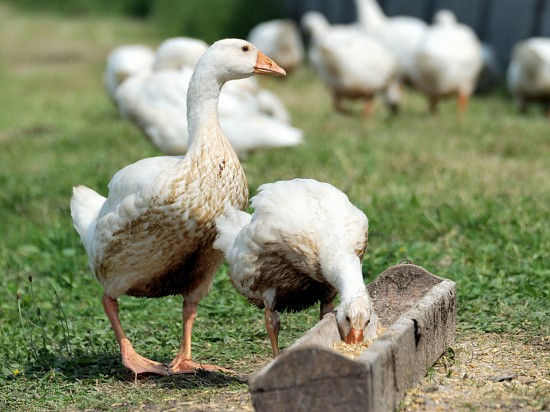If you have ever owned a cat, you are sure to know all about their claws and how they use them. Cats use their claws for traction, climbing, accelerating, moving, turning quickly, defending themselves and even for such mundane activities as cleaning up after using the litter box. It's part of their natural activity. Just watch a cat chase a toy in play and you'll see how they use their claws to grip, pull and rapidly change directions.
All cats routinely scratch at things with their front feet. The main reason is to sharpen the front claws and to help shed the old outer husk-like layers. Scratching also exercises and strengthens the muscles in their front paws. Your outdoor cat will often use a tree to scratch at, but if your cat is confined within the home, he will look for alternatives, like furniture or carpeted stairs, especially the vertical surfaces.
Get a Scratching Pole
If your cat is an indoor cat, you will need to provide a safe outlet for this behavior with some sort of scratching post. These are typically pads, posts or poles covered with carpet or made of compressed cardboard. They vary in price from a few dollars for a small scratch pad to elaborate "condo" units covered in carpet with built in toys that can run into the hundreds of dollars. They can also be made at home inexpensively from scraps of lumber and carpet remnants.
.
The key is to begin training your cat to scratch in the appropriate areas while they are young and you can begin this by rubbing some catnip where you want the cat to scratch. This is usually enough to start developing the habit.
If you have left it too late for this behavior training, or you have a new addition that may not have been properly trained, you will to be quick to catch your cat in the act of scratching your furniture. You then take your cat to its alternative scratching post or pad and reward its use with praise, plenty of affection and a few treats. This may take some time and effort, so a little patience will go a long way.
While in training, you can protect your furniture by using throws or sheets to deter your cat. You can also wrap specific areas with tin foil, sticky shelf paper like Mac-Tac or even use a natural repellent spray like citronella. Also, provide lots of toys and games to keep your cat from getting bored.
Just A Trim, Please
Trimming your cat抯 claws regularly is another way to reduce the damage that a cat may do. However, you have to be very careful that you don't clip too far, into the 'quick' of the nail as it will cause bleeding and pain. The best time to do this is when your cat has developed a high level of trust with you and is very relaxed. It抯 best with two people, one holding the cat, talking gently and being affectionate and the other clipping the nails quickly. If you don't feel comfortable doing it yourself, have your cat's claws trimmed at the groomers on a regular basis.
De-clawing a cat is highly discouraged as it is a serious surgical operation, and not a matter to be taken lightly. A cat without claws is at a big disadvantage when going about its daily life. He is likely to be clumsy and at risk of hurting himself or being unable to defend himself. Many Veterinarians will no longer perform this procedure as it often results in aggressive behaviors once performed.
Many people think that you cannot train a cat and this is simply not true. With some time and a little patience, most cats will quickly learn whatever behavior you are trying to instill. Using these tips, you will be able to enjoy your cat and your furniture without worry.

 Tips On How To Care For Newborn Puppies
Tips On How To Care For Newborn Puppies
 Longevity, Health And Hereditary Conditions Within The Belgian Malinois Dog Breed
Longevity, Health And Hereditary Conditions Within The Belgian Malinois Dog Breed
 Reverse Sneezing In Dogs - What Is It, And What Does It Mean?
Reverse Sneezing In Dogs - What Is It, And What Does It Mean?
 Obesity In Cats
Obesity In Cats
 Keeping Geese - The Best And Most Natural Grass Control Ever
Keeping Geese - The Best And Most Natural Grass Control Ever
 How To Decide If A Great Dane Is The Right Dog For You, And How To Pick The Right One
How To Decide If A Great Dane Is The Right Dog For You, And How To Pick The Right One